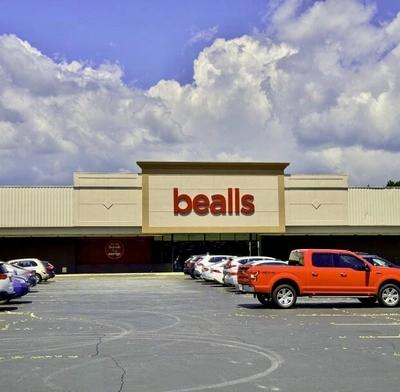A century-old retailer meets a 21st-century experiment.

Bealls, a 110-year-old Florida-based retail chain best known for family clothing and home goods, says it’s ready for the future. On 20 Oct, the company announced a partnership with Flexa that will let customers pay in 90 digital currencies across 660 stores in the United States.
“Digital currency is shaping the future of commerce,” said CEO Matt Beall in the company’s statement. Flexa co-founder Trevor Filter called the move “the next big evolution in payments.”
It’s a bold claim. Yet beneath the corporate optimism lies a more complicated question: can a mid-market retailer known for discount jeans and homeware really usher crypto payments into everyday life?
Who’s really asking to pay in crypto?
Bealls’ typical customer base, suburban families in the southern and midwestern US, doesn’t overlap much with the population of crypto-active consumers. According to the Federal Reserve Bank of Kansas City, fewer than 2% of Americans used cryptocurrency for purchases between 2023 and 2024, down from about 3% in 2021 and 2022. The Kansas Fed noted that most of those payments occurred because the merchant preferred crypto over the consumer's preference.
Public sentiment isn’t helping. A Pew Research Center survey found 63% of Americans have little to no confidence that current ways to invest in, trade, or use crypto are reliable or safe. That makes Bealls’ timing look less like an answer to demand and more like an effort to project modernity.
For younger consumers, the signal might still resonate. A 2025 Fool Research survey found 71% of Gen Z and 60% of millennials say they would use stablecoins for everyday purchases, compared with just 18% of baby boomers.
Rolling out 99 currencies, one terminal at a time
The logistics behind such a rollout are significant. Flexa’s infrastructure integrates with hundreds of wallets and settles transactions instantly in dollars. Customers can pay in Bitcoin, Ether, or USDT while Bealls receives fiat in real time.
In practice, each store needs updated terminals, staff training, and refund workflows that account for digital payments. Even if Flexa converts every transaction to cash, each sale still passes through a regulated payments pipeline that must be auditable and reconciled.
It's not the first time retailers have suggested they're modernizing in response to consumer demand.
In 2021, Verifone CEO Mike Pulli explained in an interview about his firm's BitPay partnership: “Inside a brick-and-mortar store, you can use crypto the same way you use a normal credit card.” The system, he said, allows BitPay to receive the crypto while the merchant “settles immediately in dollars,” including refunds.
BitPay CEO Stephen Pair argued that such partnerships respond to “pent-up consumer demand to spend crypto,” but the numbers tell a quieter story.
Reality check at the counter
Other early adopters suggest crypto remains a minor footnote at the register. AMC Theatres CEO Adam Aron said that digital options, including Apple Pay, Google Pay, PayPal, and crypto, accounted for 14% of the company’s online transactions as far back as four years ago, although the data show that crypto’s share alone is likely marginal. The cinema operator has added ways to accommodate, or incentivize, movie fans since then.
Meanwhile, eMarketer has projected that US crypto-payment adoption will grow 82% by 2026, but still reach only 2.6% of the population. Deloitte’s 2024 merchant survey found that 85% of companies adopting crypto did so to reach new customers, and 77% cited lower transaction fees, showing that motivation is as much strategic as financial.
Adoption or anticipation?
Bealls’ move may therefore say less about today’s retail demand and more about preparing for a payments landscape in flux. The most active experiments are happening not with volatile coins but with stablecoins and tokenized dollars.
Stripe re-enabled crypto payments this year using USDC on Solana, Ethereum and Polygon. Company President John Collison has said, “Crypto is finding real utility,” while co-founder and brother Patrick Collison emphasized in September that after a decade of disappointment in crypto Stripe is finally seeing some merit in the use of tokens pegged to fiat currencies. PayPal’s PYUSD stablecoin, integrated through Coinbase, follows a similar path, bringing digital currency into regulated rails rather than speculative trading.
For Bealls, this quiet infrastructure shift may be the real play: integrate early, settle in dollars, and be ready if stablecoin-based payments go mainstream.
The takeaway
Bealls’ rollout won’t fill its 660 stores with shoppers paying in 99 currencies any time soon. But it places the century-old retailer inside a much larger experiment: building the pipes of a digital-asset economy before customers actually demand it.
Crypto payments remain more signal than substance, a way to look future-ready without betting the till. Yet, as Stripe, PayPal, and others rebuild those rails, retailers like Bealls are ensuring they’ll be plugged in when, or if, the shift finally reaches Main Street.







